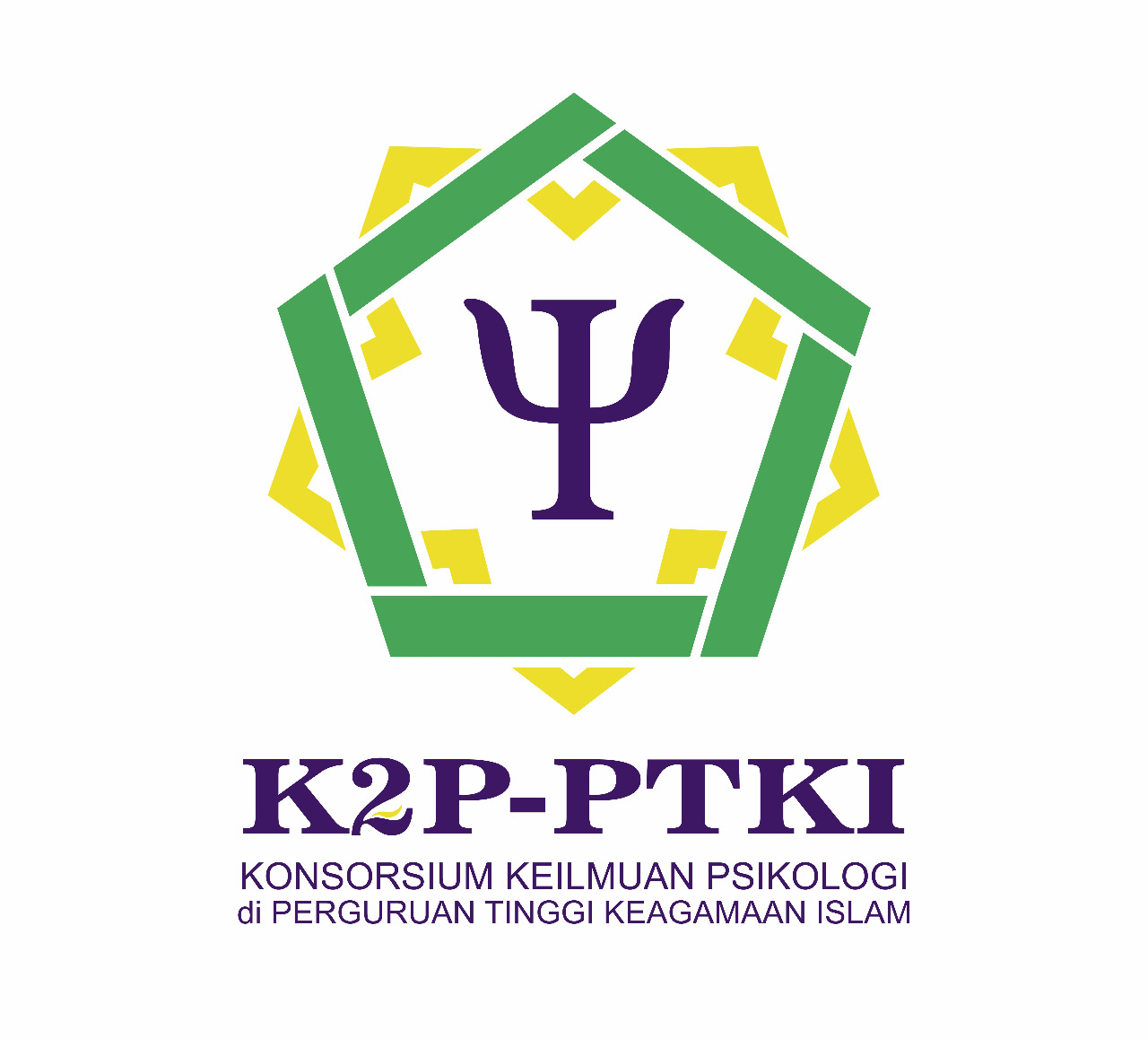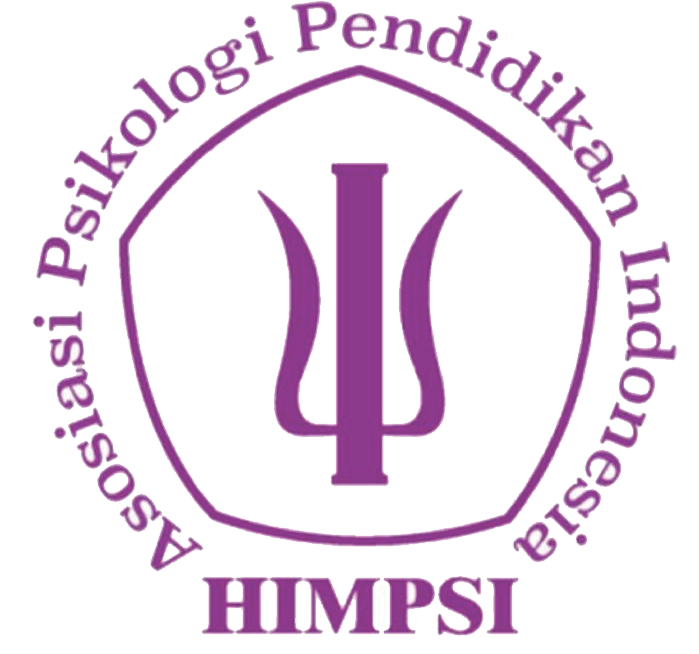About Closeness and Malicious Intent: Role of Loneliness with Emotional intimacy to Malicious envy/ Tentang Kedekatan dan Niat Jahat: Peran Kesepian dengan Kelekatan Emosional Terhadap Iri Hati
Abstract
Abstract: Previous studies have discussed a lot about the factors that cause malicious envy. However, there are still no studies that discuss loneliness and emotional intimacy as one of the factors that predict malicious envy. The current study aims to examine the effect of loneliness and emotional intimacy on malicious envy, and to find out which of the two variables has the greatest influence on malicious envy. This research is a cross sectional quantitative research with ex post facto method. The sampling technique used was convenience sampling, with a total of 512 respondents aged 18-34 (SD = 2.61) years and were Instagram users. Based on the research findings, loneliness and emotional intimacy positively affect envy, where loneliness is the most influencing factor for envy.
Keywords: Loneliness; Emotional intimacy; Envy; Malicious envy
Abstrak: Penelitian sebelumnya telah membahas banyak hal tentang faktor-faktor yang menyebabkan kecemburuan jahat. Namun, masih belum ada penelitian yang membahas loneliness dan emotional intimacy sebagai salah satu faktor yang memprediksi malicious envy. Studi saat ini bertujuan untuk memeriksa efek loneliness dan emotional intimacy pada malicious envy, dan untuk mengetahui mana dari dua variabel yang memiliki pengaruh terbesar pada kecemburuan jahat. Penelitian ini adalah penelitian kuantitatif cross sectional dengan metode ex post facto. Teknik pengambilan sampel yang digunakan adalah convenience sampling, dengan total 512 responden berusia 18-34 tahun (SD = 2,61) tahun dan merupakan pengguna Instagram. Berdasarkan temuan penelitian, loneliness dan emotional intimacy secara positif mempengaruhi malicious envy, di mana loneliness adalah faktor yang paling mempengaruhi untuk envy.
Kata Kunci: Loneliness; Emotional intimacy; Envy; Malicious envy
Keywords
Full Text:
PDF (Bahasa Indonesia)References
Adamczyk, K. (2016). An Investigation of Loneliness and Perceived Social Support Among Single and Partnered Young Adults. Current Psychology, 35(4), 674–689. https://doi.org/10.1007/s12144-015-9337-7
Agusdwitanti, H., & Tambunan, S. M. (2015). Kelekatan dan Intimasi pada Dewasa Awal (Vol. 8, Issue 1, p. 7).
Behler, A. M. C., Wall, C. S. J., Bos, A., & Green, J. D. (2020). To Help or To Harm? Assessing the Impact of Envy on Prosocial and Antisocial Behaviors. Personality and Social Psychology Bulletin, 46(7), 1156–1168. https://doi.org/10.1177/0146167219897660
Berger, C., & Dijkstra, J. K. (2013). Competition, Envy, or Snobbism? How Popularity and Friendships Shape Antipathy Networks of Adolescents. Journal of Research on Adolescence, 23(3), 586–595. https://doi.org/10.1111/jora.12048
Bruce, L. D. H., Wu, J. S., Lustig, S. L., Russell, D. W., & Nemecek, D. A. (2019). Loneliness in the United States: A 2018 National Panel Survey of Demographic, Structural, Cognitive, and Behavioral Characteristics. American Journal of Health Promotion, 33(8), 1123–1133. https://doi.org/10.1177/0890117119856551
Crusius, J., Gonzalez, M. F., Lange, J., & Cohen-Charash, Y. (2020). Envy: An Adversarial Review and Comparison of Two Competing Views. Emotion Review, 12(1), 3–21. https://doi.org/10.1177/1754073919873131
Fearon, R. M. P., Bakermans-Kranenburg, M. J., & Ijzendoorn, M. H. (2010). Jealousy and Attachment: The Case of Twins. In D. S. L. Hart & M. Legerstee (Eds.), Handbook of Jealousy (pp. 362–386). https://doi.org/10.1002/9781444323542.ch16
Gaia, C. A. (2002). Understanding Emotional intimacy. International Social Science Review, 77(3/4), 151–170.
Hancock, T., Adams, F. G., Breazeale, M., & Lueg, J. E. (2020). Exploring jealousy and envy in communal relationship revenge-seeking. Journal of Consumer Marketing, 37(6), 687–699. https://doi.org/10.1108/JCM-06-2019-3300
Henniger, N. E., & Harris, C. R. (2015). Envy Across Adulthood: The What and the Who. Basic and Applied Social Psychology, 37(6), 303–318. https://doi.org/10.1080/01973533.2015.1088440
Hong, Y., Liu, L., Lin, R., & Lian, R. (2020). The relationship between perceived control and life satisfaction in Chinese undergraduates: The mediating role of envy and moderating role of self-esteem. Current Psychology. https://doi.org/10.1007/s12144-020-00863-5
Kraft, C., & Mayeux, L. (2018). Associations Among Friendship Jealousy, Peer Status, and Relational Aggression in Early Adolescence. The Journal of Early Adolescence, 38(3), 385–407. https://doi.org/10.1177/0272431616670992
Lange, J., & Crusius, J. (2015). Dispositional Envy Revisited: Unraveling the Motivational Dynamics of Benign and Malicious envy. Personality and Social Psychology Bulletin, 41(2), 284–294. https://doi.org/10.1177/0146167214564959
Lennarz, H. K. (2017). Jealousy in adolescents’ daily lives: How does it relate to interpersonal context and well-being? Journal of Adolescence, 14.
Levinson, D. J. (1986). A Conception of Adult Development. American Psychologist.
Matthews, T., Danese, A., Caspi, A., Fisher, H. L., Goldman-Mellor, S., Kepa, A., Moffitt, T. E., Odgers, C. L., & Arseneault, L. (2019). Lonely young adults in modern Britain: Findings from an epidemiological cohort study. Psychological Medicine, 49(2), 268–277. https://doi.org/10.1017/S0033291718000788
Matthews, T., Danese, A., Wertz, J., Odgers, C. L., Ambler, A., Moffitt, T. E., & Arseneault, L. (2016). Social isolation, loneliness and depression in young adulthood: a behavioural genetic analysis. Social Psychiatry and Psychiatric Epidemiology, 51(3), 339–348. https://doi.org/10.1007/s00127-016-1178-7
Navarro-Carrillo, G., Beltrán-Morillas, A. M., Valor-Segura, I., & Expósito, F. (2017). What is behind envy? Approach from a psychosocial perspective. Revista de Psicologia Social, 32(2), 217–245. https://doi.org/10.1080/02134748.2017.1297354
Ng, J. C. K., Au, A. K. Y., Wong, H. S. M., Sum, C. K. M., & Lau, V. C. Y. (2020). Does Dispositional Envy Make You Flourish More (or Less) in Life? An Examination of Its Longitudinal Impact and Mediating Mechanisms Among Adolescents and Young Adults. Journal of Happiness Studies, 1–29. https://doi.org/10.1007/s10902-020-00265-1
Parker, T. J. (2016). A Phenomenological Study of Jealousy and Envy in Non-Monogamous Partnerships.
Rentzsch, K., & Gross, J. J. (2015). Who Turns Green with Envy? Conceptual and Empirical Perspectives on Dispositional Envy. European Journal of Personality, 29(5), 530–547. https://doi.org/10.1002/per.2012
Schoebi, D., & Randall, A. K. (2015). Emotional Dynamics in Intimate Relationships. Emotion Review, 7(4), 342–348. https://doi.org/10.1177/1754073915590620
Sinclair, V. G., & Dowdy, S. W. (2005). Development and validation of the emotional intimacy scale. Journal of Nursing Measurement, 13(3), 193–206. https://doi.org/10.1891/jnum.13.3.193
Tesser, A., Millar, M., & Moore, J. (1988). Some Affective Consequences of Social Comparison and Reflection Processes: The Pain and Pleasure of Being Close. Journal of Personality and Social Psychology, 54(1), 49–61. https://doi.org/10.1037/0022-3514.54.1.49
Timmerman, G. M. (1991). A concept analysis of intimacy. Issues in Mental Health Nursing, 12(1), 19–30. https://doi.org/10.3109/01612849109058207
Twenge, J. M., Spitzberg, B. H., & Campbell, W. K. (2019). Less in-person social interaction with peers among U.S. adolescents in the 21st century and links to loneliness. Journal of Social and Personal Relationships, 36(6), 1892–1913. https://doi.org/10.1177/0265407519836170
Tzouvara, V., Papadopoulos, C., & Randhawa, G. (2015). A narrative review of the theoretical foundations of loneliness. British Journal of Community Nursing, 20(7), 329–334. https://doi.org/10.12968/bjcn.2015.20.7.329
Van Niekerk, L. M., Schubert, E., & Matthewson, M. (2020). Emotional intimacy, empathic concern, and relationship satisfaction in women with endometriosis and their partners. Journal of Psychosomatic Obstetrics and Gynecology, 1–7. https://doi.org/10.1080/0167482X.2020.1774547
Volling, B. L., Kennedy, D. E., & Jackey, L. M. H. (2010). The Development of Sibling Jealousy. In Handbook of Jealousy: Theory, Research, and Multidisciplinary Approaches (Issue April). https://doi.org/10.1002/9781444323542.ch17
Wols, A., Scholte, R. H. J., & Qualter, P. (2015). Prospective associations between loneliness and emotional intelligence. Journal of Adolescence, 39, 40–48. https://doi.org/10.1016/j.adolescence.2014.12.007
Yildrim, O. (2020). Education in the Knowledge Society The Relationship Between Loneliness, Malicious envy, and Cyberbullying in Emerging Adults. Education in the Knowledge Society, 20, 1–10. https://doi.org/http://dx.doi.org/10.14201/eks2019_20_a30
Yoshimura, C. G. (2010). The experience and communication of envy among siblings, siblings-in-law, and spouses. Journal of Social and Personal Relationships, 27(8), 1075–1088. https://doi.org/10.1177/0265407510382244
Zhao, J., Xiang, Y., Zhao, J., Li, Q., Dong, X., & Zhang, W. (2020). The relationship between childhood maltreatment and benign/malicious envy among Chinese college students: the mediating role of emotional intelligence. Journal of General Psychology, 147(3), 277–292. https://doi.org/10.1080/00221309.2020.1743229
Zhou, M., & Zhang, X. (2019). Online social networking and subjective well-being: Mediating effects of envy and fatigue. Computers & Education, 140, 103598. https://doi.org/10.1016/j.compedu.2019.103598
DOI: https://doi.org/10.18860/psikoislamika.v18i1.12120

This work is licensed under a Creative Commons Attribution-NonCommercial-ShareAlike 4.0 International License.


.jpg)


.jpg)